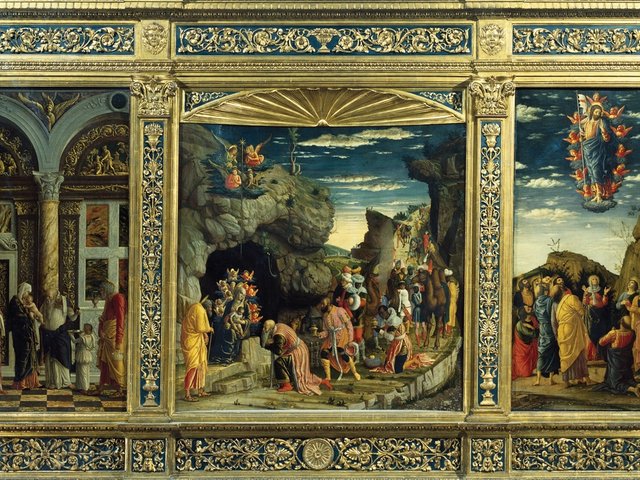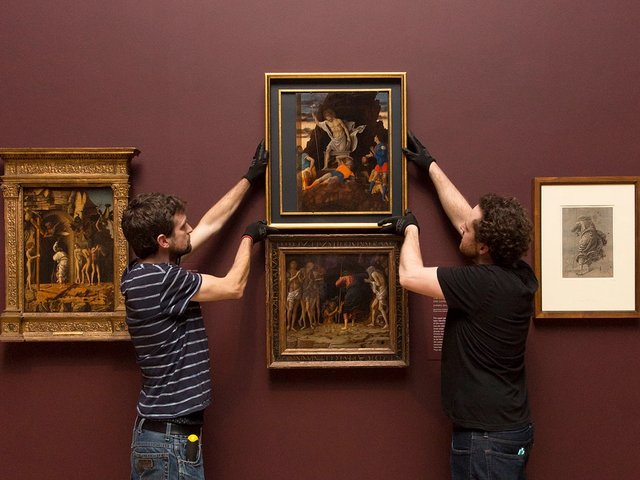The Accademia Carrara in Bergamo, Italy, has discovered a “new” painting by Andrea Mantegna hidden in plain sight in its own collection. The curator Giovanni Valagussa re-attributes the tempera on panel work, Resurrection of Christ (around 1492-93), to the Renaissance master in the museum’s complete catalogue of 110 paintings from the 14th and 15th centuries, Dipinti Italiani 1300-1500, which is published by Officina Libraria.
The artist’s name is written in pen or fine brush in capital letters on the back of the wooden panel; the script appears to date from the same time as the painting. The work was recorded as an original Mantegna—“The Resurrection of Our Lord; six figures that are among the beautiful works by this illustrious master”—in an 1846 catalogue of the collection of Count Guglielmo Lochis, a trustee and later honorary director of the Accademia Carrara. A document from the same year indicates that the painting was also restored at the time. Lochis died in 1859, bequeathing his villa and its art to Bergamo, and the Resurrection was among 240 paintings moved to the museum in 1866.
Over the years, however, different art historians downgraded the attribution. Ironically, it was Giovanni Morelli, the collector and great theorist of connoisseurship charged with overseeing the transfer of Lochis’s works to the Accademia Cararra, who first cast doubt on the quality of the Resurrection. Morelli’s belief that the painting was “all ruined by restoration work” led early 20th-century art historians to suggest that the composition was conceived by Mantegna but actually executed by his studio or by his son and pupil Francesco. The American specialist of the Italian Renaissance, Bernard Berenson, relegated the painting to the category of “copies of lost works” in the 1930s.
The idea stuck: the painting was not part of the Accademia Carrara’s permanent displays after the Second World War and was catalogued as a copy. Valagussa, however, observed a small gold cross on the lower edge of the panel—identical to the one on Christ’s banner at the top—that indicates a missing section of the painting below. He has now identified the lower half as Descent into Limbo (around 1492), which was sold as an autograph Mantegna for more than $28m at Sotheby’s in New York in 2003. Valagussa’s theory is supported by the Mantegna expert Keith Christiansen, the curator of European Paintings at the Metropolitan Museum of Art in New York.
The Accademia Cararra is in talks with the anonymous private owner to borrow Descent into Limbo for an exhibition reuniting the two halves next year, the Wall Street Journal reports. In the meantime, there are plans to restore the Bergamo panel, which has been dulled by varnish applied in the 19th century, according to a statement from the museum.
The re-attribution is “an enthralling confirmation and a cause for celebration, a moment to be shared and a remarkable step towards the future”, says Giorgio Gori, the president of the Fondazione Accademia Carrara and the mayor of Bergamo. “We look forward to seeing you.”




